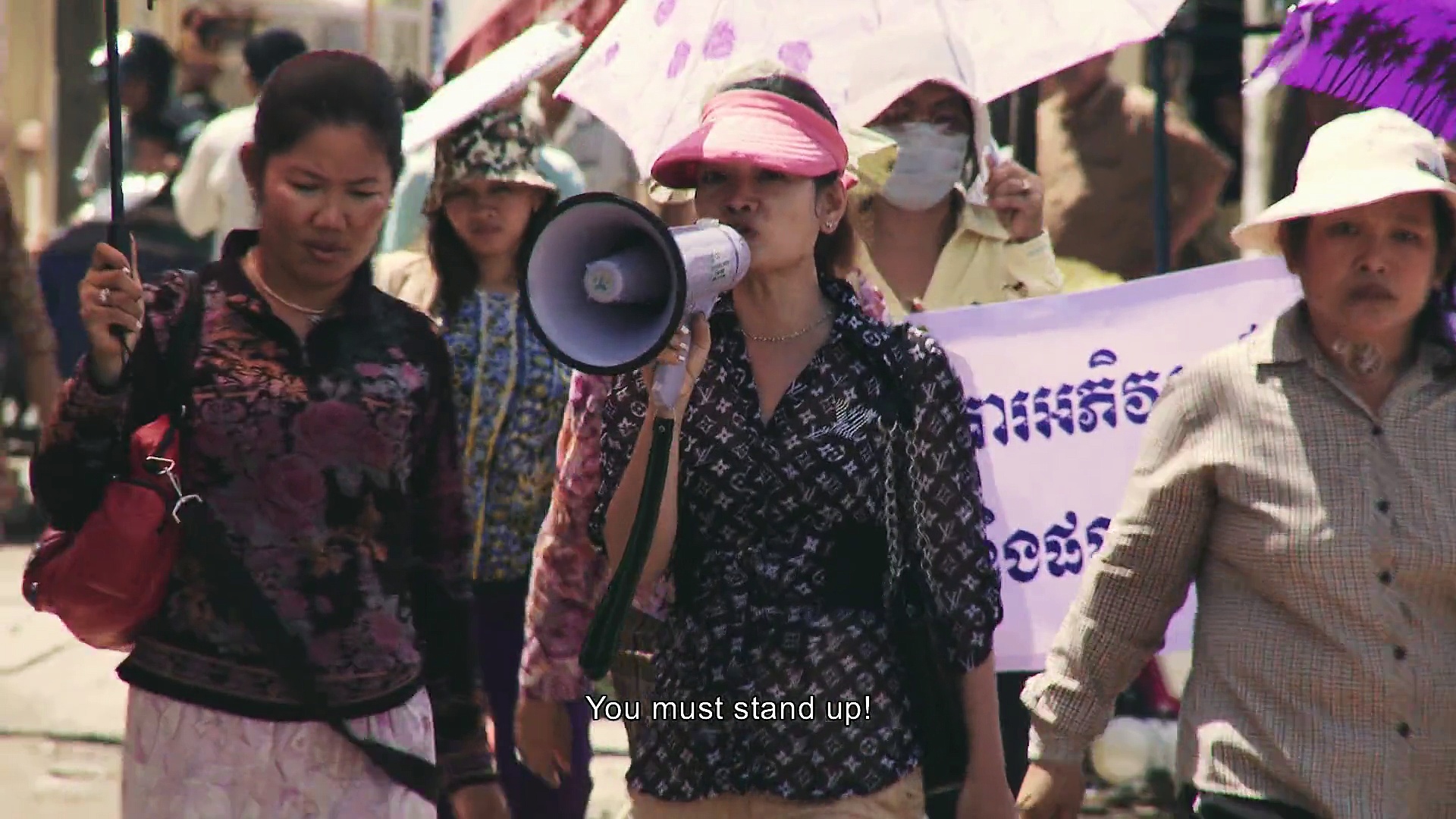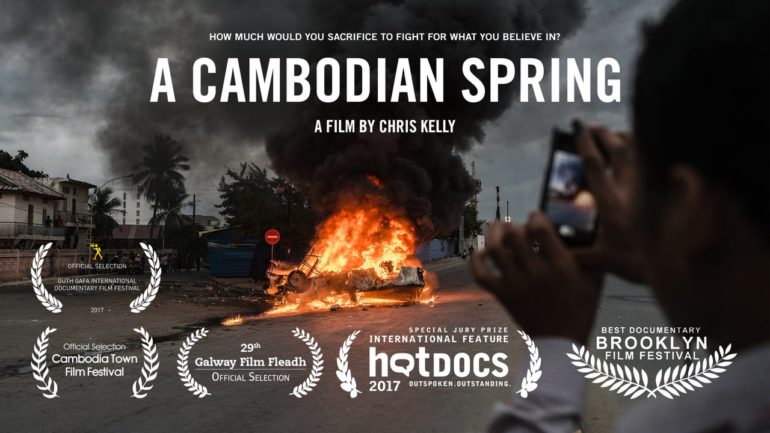Chris Kelly’s incendiary documentary A Cambodian Spring is a powerful reminder of the plight often suffered by those less fortunate in the name of progress. Shot over 6 years, it offers us chapters into the lives of some residents around Boeung Kak Lake and the devastation of their communities at the hands of a corporate entity that has the weight of the Cambodian government behind it.
It charts the story of a group of campaigners who seek to stop the destruction of their homes, but whose tireless efforts are seen as an act of defiance by Prime Minister Hun Sen’s ruling Cambodian People’s Party. The film follows Tep Vanny and Toul Srey Pov, working-class mothers who feel trapped and betrayed by their political leaders when a World Bank-backed development project begins to strip away what was once a group of closely knit communities. With the help of a Buddhist monk, Venerable Luon Sovath, they begin to fight for fair compensation and clearly defined property rights.
Sadly this is a story that is becoming all too familiar, drawing parallels with incidents like the Dakota oil pipeline protests in the US and the Shell to Sea clashes here at home. Often a catalyst for violence between state security forces and activists, it is only when they are extensively reported on that a particular indigenous plight gathers any traction.

Kelly’s documentary forgoes any direct narration on the subject, instead, peeling back the curtain and allowing us to see first-hand the impact that the Shukaku company’s work has had on the inhabitants of the area. Sold to the locals as an important and progressive development project with a promise of land rights, instead what we find is a shocking exploitation of the area’s resources, with those living there being subjected to the forced appropriation of their homes and often with little by way of compensation.
As harrowing as it is impactful, A Cambodian Spring is a compelling and absorbing exposé of insidious corruption and the freedom an oppressive regime has to exert its will when the media turns it back. More than that though, it manages to capture the majesty of the human spirit in the face of such oppression, and it stands proud as a testament to all that Tep Vanny, Toul Srey Pov and Venerable Luon Sovath have endured in their struggle. It’s a story of profound tragedy but also a story of courage and of resilience and one that deserves to be seen.

